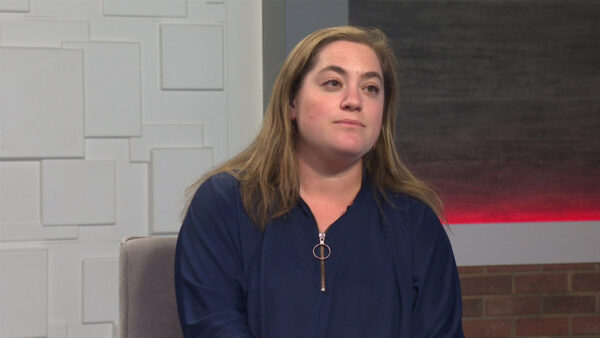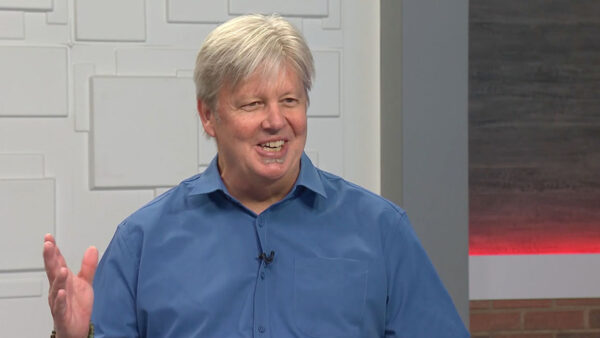New research from the W. P. Carey School of Business at ASU is shows that the Medicare Part D program is preventing wasteful spending on health care. The study’s lead author, Jonathan Ketcham, talks about the research and its implications for health care in general.
Ted Simons: Good evening, and welcome to "Horizon," I'm Ted Simons. Consumers can save money on health care when given numerous private insurance options. That's one of the findings in a recently published study of "Medicare Part D." A federal program that gives Medicare beneficiaries a menu of options for prescription drug coverage. Joining me to talk about the study is its lead author ASU professor Johnathan Ketchum of the W.P. Carey School of Economics. Good to have you here. Thanks for joining us. Is that what Medicare Part D is?
Jonathan Ketcham: Part D is the stand-alone prescription program created in 2006. A lot of seniors were left to pay for prescription drug costs out of pocket. The government created a new program where people were left to choose from private insurance companies competing for their business rather than having a standard "one size fits all" much like traditional Medicare.
Ted Simons: And your study looked at this why?
Jonathan Ketcham: You know, I think early on there were a lot of thought leaders declaring this a failure even before the data had come in. Dan McFadden, Noble Prize winner as well as Paul Krugman, other luminaries such as Stephen Colbert mocking the design and the fact that people were left to choose on their own, the thought was this was an older population left to use online Internet-based tools to choose from really complicated products. There was widespread fears it would be too confusing and hard, and companies would be able to profit by selling not good products but by confusing the consumers.
Ted Simons: What did your study find?
Jonathan Ketcham: One of the important features of the data is we were able to look at how people's choices changed over time. In 2006, this was a brand-new market. Nobody had any experience or had made a choice like this exactly before. So we predicted perhaps in 2006 people made mistakes but they corrected them by 2007. That's exactly what we found. People were leaving money on the table in the first year of the program, and they were quickly correcting that the next year.
Ted Simons: Looking at anything in 2006 or 2007 would be a different beasts I would imagine from looking at it now. How much did economic conditions back then and economic conditions now, how does that change the variable? How does it change the dynamic?
Jonathan Ketcham: If anything, it actually has made people more sensitive to those costs. It likely has made them pay even more attention and choose even more effectively. The general framework of the program is the same. Consumers are allowed and left to choose on their own. One of the big differences with Part D, people now have five years of experience on this program and maybe know how to evaluate plans better.
Ted Simons: You mentioned people choosing more carefully. Are they choosing more carefully? Because again, one of the criticisms is you give folks an option, they will go for the cheapest or something that may not be enough for what they need.
Jonathan Ketcham: That's the prevailing wisdom, at least before our study took it to the data. People just paid attention to premiums. Perhaps people were buying plans that were way too stingy, and we found that wasn't the story. People were able to lower their total spending between the first year and the second year of the program.
Ted Simons: Participation higher than expected, correct?
Jonathan Ketcham: It was. It didn't come from our study, but our study was building on the prior evidence about how Part D proceeded.
Ted Simons: Expanded drug use, correct?
Jonathan Ketcham: To some degree yes.
Ted Simons: And why do we think that is? Because people figured it out?
Jonathan Ketcham: Because insurance lowers the cost and increased access. That was one of the stated goals of the program.
Ted Simons: A higher level of consumer satisfaction was noted. What does that mean and how was it measured?
Jonathan Ketcham: Again, those are from other studies outside of our study. We were sort of building on that evidence. They were asking consumers, how happy are you with your plan, your choice?
Ted Simons: From what you looked at and from what the other studies where everything was kind of gathered together, what kind of sample size was used?
Jonathan Ketcham: We looked at 72,000 people enrolled in a plan either sold or administered by CVS Caremark which is one of the big three prescription drug managers. They were kind enough to share those data with us to look under the hood a little bit. We combined that with data from CMS, the government agency that actually runs these plans. Then we could generate an estimate of what everybody would have spent under every plan available to them. So we could see how well their actual choice was compared to the full range of options given the drugs they were consuming.
Ted Simons: The over spending was reduced by?
Jonathan Ketcham: $300 on average. Four out of five people shared on those gains. Those are very large and widespread gains that we found.
Ted Simons: So the bottom line is that folks can make good choices, even folks that might be a little older or infirm or not necessarily of the soundest mind or body, they can make good choices. How do we explain this?
Jonathan Ketcham: What we found was the oldest consumers improved by the most. That was a really surprising result out of this. We also saw consumers taking medication for Alzheimer's disease shared in these gains, too. We couldn't see the choice process but we could see the end result. It's a testament to the role that family members and health care providers and other people are playing in helping some of these populations make good choices.
Ted Simons: So if someone came back and said, "You've got too many folks paralyzed by too many choices here it just doesn't make sense and folks will sit there and not know what to do" how are you going respond to that with what you found?
Jonathan Ketcham: Our data showed people didn't have inertia. They weren't overwhelmed with too much in this context. Even though I think ahead of time we would have expected this as the very context where consumer confusion would have been prevalent, we didn't find that. People evaluated their plans and switched plans and lowered spending as a result.
Ted Simons: What do we take from all this?
Jonathan Ketcham: Even in health care, people can make good choices. For beneficiaries on Medicare who may be facing open enrollment right now, keep up the good work. If you're feeling overwhelmed reach out to someone. We couldn't see the actions happening but we could see the results of those actions. And it seems like it's paying off.
Ted Simons: For states trying to figure out the exchanges because of the Health Care Reform Bill, and those things coming up, how does this play into that?
Jonathan Ketcham: Yeah, I think not finding evidence of consumer confusion in Medicare Part D provides some insights both about health insurance reform in general, and other products such as mortgages and credit cards, where we think that perhaps consumers might be confused. The fact that we don't see consumers confusion or being too overwhelmed in this context suggests there are real benefits from allowing people to choose what's the best option for themselves.
Ted Simons: Would you suggest, judging from the study that there are certain regulations that need to be limited but not as focused as they are on these issues?
Jonathan Ketcham: You know, I think I would like to see more widespread evidence as a researcher. I'm always going for more research. I'd like to see more widespread evidence. But at least provoke some thought, "Maybe people really can navigate and find products that are best suited for them." These plans are really different, and people are really different from each other. Rather than having a government agency restrict choice and try to make this a one size fits all question.
Ted Simons: You've got the government agency and one size fits all, and you've got your research showing folks can handle this pretty well on their own. Which still would help more folks?
Jonathan Ketcham: I think it's always a question of bang for your buck. How can we get the most value, this is part of the conversation we're having as a country, how to get the most value out of our individual and government spending. I think we have some tension between these two extremes. Medicare Part D is an interesting blend of the two where the government is relying on private companies and individuals.
Ted Simons: Were you surprised by any of these results?
Jonathan Ketcham: The results showing that the Alzheimer's population and oldest population improved by the most was surprising. I went into this with an open mind to see what this data actually showed to see how people's choices changed over time.
Ted Simons: All right, very good, thanks for joining us. We appreciate it.
Jonathan Ketcham: Thank you.
Jonathan Ketcham : Lead Author, Medicare Part D Program























